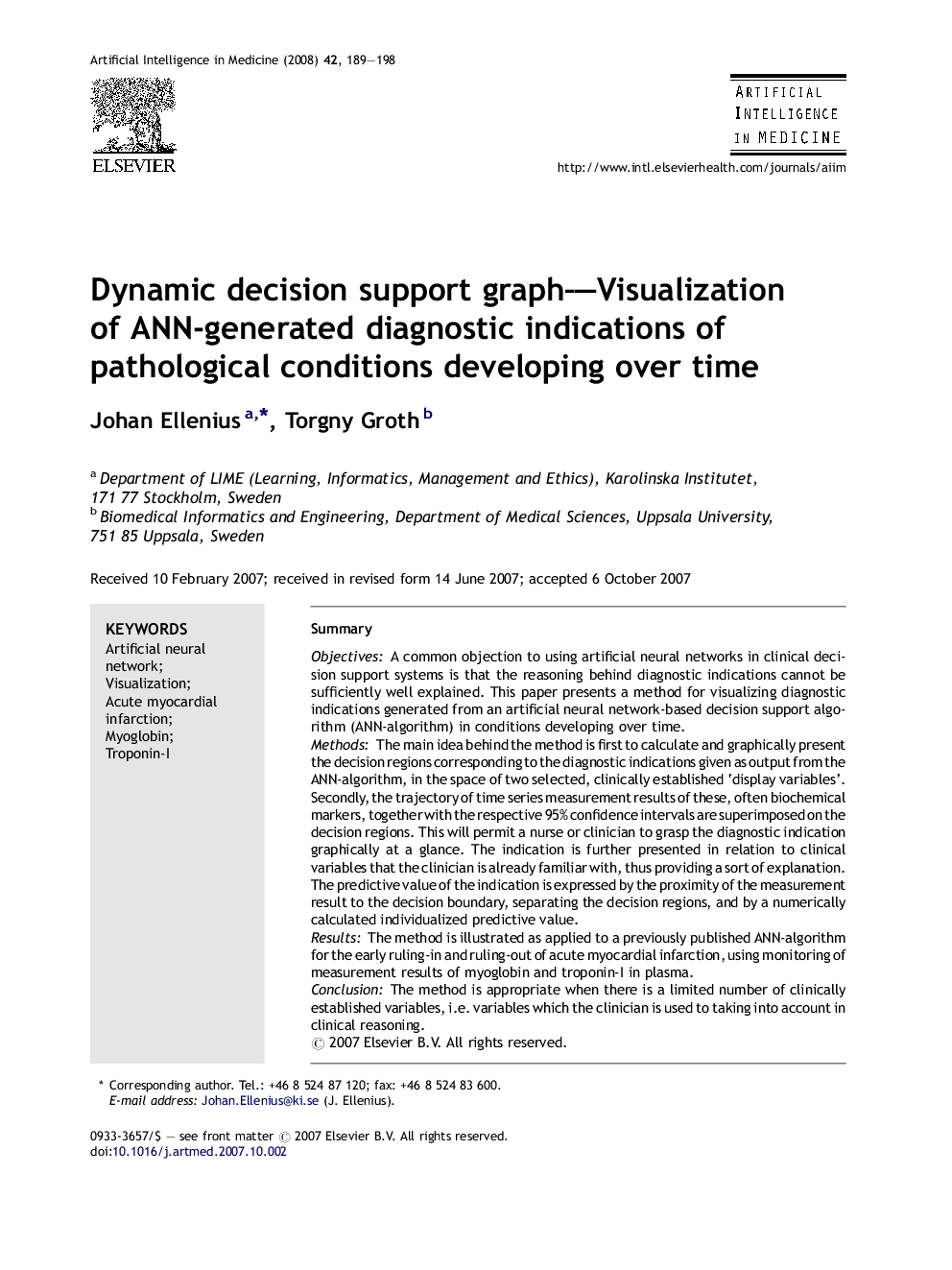| Article ID | Journal | Published Year | Pages | File Type |
|---|---|---|---|---|
| 377794 | Artificial Intelligence in Medicine | 2008 | 10 Pages |
SummaryObjectivesA common objection to using artificial neural networks in clinical decision support systems is that the reasoning behind diagnostic indications cannot be sufficiently well explained. This paper presents a method for visualizing diagnostic indications generated from an artificial neural network-based decision support algorithm (ANN-algorithm) in conditions developing over time.MethodsThe main idea behind the method is first to calculate and graphically present the decision regions corresponding to the diagnostic indications given as output from the ANN-algorithm, in the space of two selected, clinically established ‘display variables’. Secondly, the trajectory of time series measurement results of these, often biochemical markers, together with the respective 95% confidence intervals are superimposed on the decision regions. This will permit a nurse or clinician to grasp the diagnostic indication graphically at a glance. The indication is further presented in relation to clinical variables that the clinician is already familiar with, thus providing a sort of explanation. The predictive value of the indication is expressed by the proximity of the measurement result to the decision boundary, separating the decision regions, and by a numerically calculated individualized predictive value.ResultsThe method is illustrated as applied to a previously published ANN-algorithm for the early ruling-in and ruling-out of acute myocardial infarction, using monitoring of measurement results of myoglobin and troponin-I in plasma.ConclusionThe method is appropriate when there is a limited number of clinically established variables, i.e. variables which the clinician is used to taking into account in clinical reasoning.
